Bastion
LQ: 9.15
Recommended Age: 10+
Skills Used: Planning, Working Memory, Mathematics, Reading

Minecraft is an open-world game unlike any other. Players are placed in a borderless, randomly generated land with no supplies, directions, or objective. It is up to them to decide what to do and how to do it. Players collect materials from the world around them in order to ‘craft’ items and build whatever their mind can imagine. The concept is similar to playing with LEGOs, only the amount of blocks is limitless. There are forests to explore, mountains to climb, oceans to cross, and dungeons to discover. When the sun goes down, the monsters appear, and players must fend them off or build shelter for protection. Objectives are imagined by players, allowing them to truly create their own virtual world, mining materials and building tools to better help them do so. Due to some minimal violence and the initial complexity of the game, Minecraft is recommended for ages 6 and up.
Teachers: Check out the Classroom Guide!
This game is good for kids who need help with Focus, Flexibility, Organization, Planning and Time Management. Read on to find out why.
Focus - Getting started and then maintaining attention and effort to tasks.
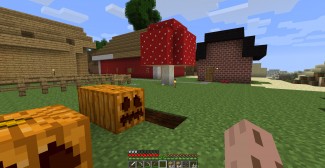 Players must monitor their hunger and health meters throughout the game in order to not fall prey to starvation or monsters lurking in the darkness. To replenish these meters, players must consume food. Food can be obtained in a wide variety of ways, such as hunting wild animals, farming, or even baking cakes. However players choose to live in the game is entirely up to them, but trouble will arise if they fail to remain constantly aware of surroundings, inventory, and health. Because Minecraft's environment is randomly generated, players must be highly aware of their surroundings in order to navigate the vast landscape. Players can easily become lost in the border-less world if they do not pay strict attention to their relationship with the landmarks around them or the direction in which they start their journeys. Before players are able to craft some of the more complex items such as a compass or map, they must first rely on the rising and setting of the sun and the surrounding biomes to navigate the world.
Players must monitor their hunger and health meters throughout the game in order to not fall prey to starvation or monsters lurking in the darkness. To replenish these meters, players must consume food. Food can be obtained in a wide variety of ways, such as hunting wild animals, farming, or even baking cakes. However players choose to live in the game is entirely up to them, but trouble will arise if they fail to remain constantly aware of surroundings, inventory, and health. Because Minecraft's environment is randomly generated, players must be highly aware of their surroundings in order to navigate the vast landscape. Players can easily become lost in the border-less world if they do not pay strict attention to their relationship with the landmarks around them or the direction in which they start their journeys. Before players are able to craft some of the more complex items such as a compass or map, they must first rely on the rising and setting of the sun and the surrounding biomes to navigate the world.
Flexibility - Adapting and adjusting to changing conditions and expectations.
In order to create anything in Minecraft players must learn to 'craft' new objects by arranging materials found in the world to fit the recipe of the desired item. The problem is that the player cannot discover these recipes until he/she creates the item for it. This backwards approach to item creation rewards intuitive and creative players with tools, weapons, furniture, items, and dozens of other objects they can use in their world. With each new material found in the game the number of items to craft grows exponentially, which allows flexible, creative players to utilize all of the hundreds of objects the game provides. Perhaps the most jarring aspect of the game to newcomers is the randomized environment. Unlike other games that have fixed levels or maps, Minecraft's terrain generator provides an infinite and unique world with every new game. Because players can no longer memorize level layouts, enemy positions, or item locations they must develop their abilities to adapt and improvise on the fly.
Organization - Arranging and coordinating materials and activities in order to complete a task.
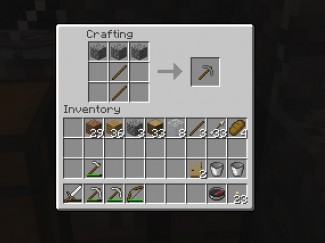 Early in the game players will realize the importance of keeping themselves and their materials not only safe, but organized. Players will often first build a house to seek shelter from enemies at night and store their items. Building in Minecraft is essentially playing with virtual building blocks, the only difference is you must actually dig up the blocks of earth before you can place them elsewhere. The only limitations on what you build are the players' creativity and organization. While the number of blocks available to the player is limitless, it still requires time and effort to harvest the blocks. Because of this fact players must learn to plan ahead and manage their materials carefully in order to build effectively. When a player's inventory becomes full from crafting items, gathering materials, and collecting any other treasures available in the world they must craft a storage container to hold their excess items. Later in the game when players have done some exploration and built several houses/buildings it is crucial to keep all of your items and materials organized. Having several storage containers for different item types and paying close attention to the character's inventory will make the game much simpler in the long-run and make the players experience much more enjoyable.
Early in the game players will realize the importance of keeping themselves and their materials not only safe, but organized. Players will often first build a house to seek shelter from enemies at night and store their items. Building in Minecraft is essentially playing with virtual building blocks, the only difference is you must actually dig up the blocks of earth before you can place them elsewhere. The only limitations on what you build are the players' creativity and organization. While the number of blocks available to the player is limitless, it still requires time and effort to harvest the blocks. Because of this fact players must learn to plan ahead and manage their materials carefully in order to build effectively. When a player's inventory becomes full from crafting items, gathering materials, and collecting any other treasures available in the world they must craft a storage container to hold their excess items. Later in the game when players have done some exploration and built several houses/buildings it is crucial to keep all of your items and materials organized. Having several storage containers for different item types and paying close attention to the character's inventory will make the game much simpler in the long-run and make the players experience much more enjoyable.
Planning - Developing a systematic approach for setting and achieving goals.
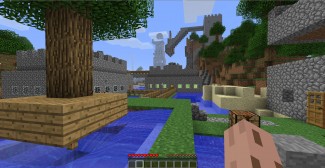 Minecraft is commonly compared to LEGOS, and for good reason. Like the popular building block past time, Minecraft allows players to build anything they can imagine -- so long as they take the proper steps necessary to do so. Creating items and structures takes several steps. Players must first mine for materials, combine those materials to create tools, and then use those tools to build and mine faster. From fireplaces to mansions, as long as the player takes the time to plan out the steps required to build something, it can be done. Users have recreated everything from replicas of the pyramids and the Globe Theatre to actual circuits and working elevators in the game, each requiring an extensive amount of foresight to construct.
Minecraft is commonly compared to LEGOS, and for good reason. Like the popular building block past time, Minecraft allows players to build anything they can imagine -- so long as they take the proper steps necessary to do so. Creating items and structures takes several steps. Players must first mine for materials, combine those materials to create tools, and then use those tools to build and mine faster. From fireplaces to mansions, as long as the player takes the time to plan out the steps required to build something, it can be done. Users have recreated everything from replicas of the pyramids and the Globe Theatre to actual circuits and working elevators in the game, each requiring an extensive amount of foresight to construct.
Time Management - Being efficient and aware of our use of time and effort.
In Minecraft, players will need to actively monitor the time and effort they expend toward specific goals. Not only will players need to compete agains the game time cycles of night and day, but working toward a singular goal without effectively managing time can often result in the neglect of other important goals. During periods of night, players must have an effective shelter constructed to defend against the wild beasts that reside in the Minecraft universe. Working toward a singular goal during the day while failing segment time to address other equally important tasks can be potentially fatal. Additionally, many goals in Minecraft take large periods of both game and real time to complete. Players who are able to successfully multitask, switch quickly between objectives, and devote proper amounts of time to their objectives are more likely to meet their own deadlines and advance further in their gameplay than players who are unable to effectively manage their time.
Use this PlayTogether guide to learn how you can help your child turn Minecraft play time into a positive learning and relationship-building experience. To learn more about why playing games with your children is so important, check out our Science of Play page.
Take a minute to talk with your child about how the Focus, Flexibility, Organization, Planning, and Time Management thinking skills work, and why they are important for success in school and at home.
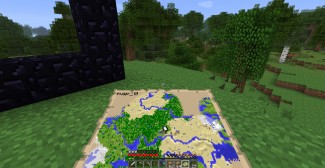 There a few different options available for you to explore Minecraft with your child. The best option is to play on Xbox 360, as that version features a cooperative multiplayer mode. Otherwise, you can either each play on separate computers, or -- if you own and Android device -- download the app off of Google Play. There are demo versions avaialble, and even if you only have a single computer to use, the open nature of the gameplay makes it easy for two players to enjoy the game together, taking turns exploring and coming up with ideas of what to build.
There a few different options available for you to explore Minecraft with your child. The best option is to play on Xbox 360, as that version features a cooperative multiplayer mode. Otherwise, you can either each play on separate computers, or -- if you own and Android device -- download the app off of Google Play. There are demo versions avaialble, and even if you only have a single computer to use, the open nature of the gameplay makes it easy for two players to enjoy the game together, taking turns exploring and coming up with ideas of what to build.
It may be helpful to have the crafting guide open to help get acclimated with the game. Below is a list of several suggestions for beginner players to complete in their first foray into the Minecraft world:
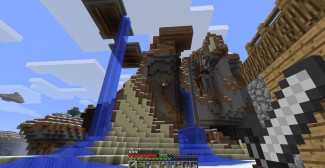
After at least the first four goals above have been met, take a moment to pause the game and talk to your child about how each thinking skills was used in the game.
Our Make it Work activities are designed to transform your child’s gameplay to real-world improvements in thinking and academic skills. If you’re just getting started with LearningWorks for Kids, we suggest you try them all to find which are the best for you and your child.
Read over the pages for Focus, Flexibility, Organization, Planning, and Time Management. Then take some time to introduce these thinking skills to your child.
Explain that:
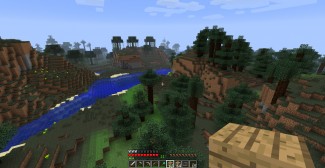 Encourage decision-making but provide directed encouragement. Your child, like many who have difficulties in getting started on tasks, might feel unsure of herself. It would inspire growth and confidence to encourage her to pick out books at the library, choose a movie for you to watch together or decide on a restaurant for a family dinner. But for getting started on specific tasks, some direct cues and prompts might be more efficient. You don’t want to do or say too much, but rather than wasting time by asking, “What homework do you have tonight?” or “When are you going to do your homework?” simply direct him to begin his work and/or tell him exactly how to start. Talk about other methods or strategies that help. Examples might be a regular homework time or a time limit on making a minor decision.
Encourage decision-making but provide directed encouragement. Your child, like many who have difficulties in getting started on tasks, might feel unsure of herself. It would inspire growth and confidence to encourage her to pick out books at the library, choose a movie for you to watch together or decide on a restaurant for a family dinner. But for getting started on specific tasks, some direct cues and prompts might be more efficient. You don’t want to do or say too much, but rather than wasting time by asking, “What homework do you have tonight?” or “When are you going to do your homework?” simply direct him to begin his work and/or tell him exactly how to start. Talk about other methods or strategies that help. Examples might be a regular homework time or a time limit on making a minor decision.

Use nontraditional art projects to practice a variety of approaches to using the same materials. Your construction supplies could include a range of collected cardboard, string, jelly beans, paste, clay, and pipe cleaners, just to name a few. The building plans could include a specific project (making a house or shelter), an abstract object (shapes and colors), or an organized design that requires using materials in a certain order. Talk about how these various ways of making something require different skills, and compare the results.
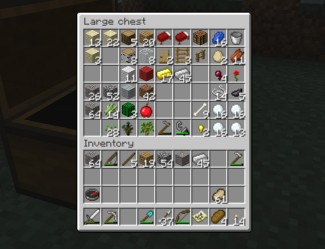 Some assembly required. Visual instructions for a Lego project or a piece of furniture can help children to see the steps of starting, organizing and completing a project. These models can help children construct their own types of “hard copy” for using illustrated directions or their own visualization skills. Offer reminders of these tools and procedures when children have a multi-step project to do.
Some assembly required. Visual instructions for a Lego project or a piece of furniture can help children to see the steps of starting, organizing and completing a project. These models can help children construct their own types of “hard copy” for using illustrated directions or their own visualization skills. Offer reminders of these tools and procedures when children have a multi-step project to do.
Anticipate needs. Plan together for what your child might need for school. Begin with a list of essential supplies such as pencils, notebooks, markers, backpack, and lunch box. Then list other materials or things she would like to bring to school and decide together which items to purchase. Gradually encourage your child to make these lists on her own. Encourage your child to think about how to determine the most important items to purchase.
Gimme a break. If your child has stagnated while performing a task, such as schoolwork or a chore, get him to move quickly doing something else. This could be a physical activity such as going for a quick bike ride, or something as simple as singing a song at a quickened pace. Getting him to move quickly in a fun (or even funny) activity may help him to become more aware of his pace in relation to other activities. Another strategy would be to take a 5-10 minute exercise break, which could include anything from doing a set of push-ups or situps, running up and down the stairs, or taking the dog out for a short walk. Initially, a parent will want to be in charge of when such breaks occur, but eventually we want the child to learn to identify when he needs to take a break himself, and furthermore, to be able to demonstrate that he is using the break responsibly by coming back to work better than before.
While playing Minecraft, players work toward a number of personally created goals by working with an enormous variety of raw materials. In order to achieve their goals, players must craft items ranging from building materials, to tools and food. Each crafted item requires the combination of a predetermined amount of prerequisite items. Players will compute basic math skills when determining the number of raw materials required to work toward a goal. For example, when crafting specific and more durable tools, players will need to compute the amount of raw materials required to craft other items which will then be combined to create their new tool. Working with both multiplication and division, players can determine the amount of time, effort, and resources that will be required to devote toward achieving their goals. Working efficiently requires mathematics so that players do not over-spend their time harvesting necessary materials, or fall short and needlessly backtrack to make up for the difference.
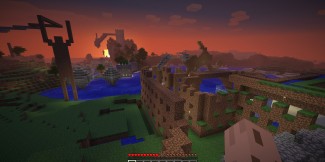 Minecraft & Autism Spectrum Disorder
Minecraft & Autism Spectrum DisorderMinecraft is a hugely popular game where children are dropped into a randomly-generated world with little instruction or guidance, and must explore the land to gather materials needed to build and survive. For children who find it difficult dealing with unstructured settings, the game serves as a fun tool to encourage adaptable thinking and flexibility. The multiplayer features foster cooperation and teamwork, making it of use to kids who find it difficult when they must work with others to accomplish a goal, especially in an unstructured setting.
How to Use Minecraft for Children with ASD:
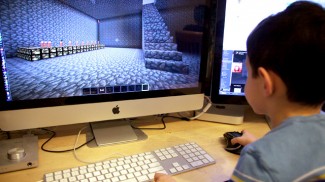 Lengthy planning, keen organizational skills and the ability to sustain focus over prolonged periods of time are not traits commonly attributed to children diagnosed with ADHD. Yet, those are the very skills players need to put to work in order to achieve success and survive the dangers of Minecraft.
Lengthy planning, keen organizational skills and the ability to sustain focus over prolonged periods of time are not traits commonly attributed to children diagnosed with ADHD. Yet, those are the very skills players need to put to work in order to achieve success and survive the dangers of Minecraft.
Using the game as an educational tool for children with ADHD can help reinforce the cognitive thinking skills this population of children commonly struggle with. Follow our guidelines below to see how you can use Minecraft to teach and practice good Focus, Planning and Organization skills with your child.
[embed]https://www.youtube.com/watch?v=lcJSOMKXuE4[/embed]
You can find more Minecraft let's plays and other let's play videos for popular games at the LearningWorks for Kids Let's Play channel on YouTube.
All membership plans come with full access to our entire suite of tools learning guides, and resources. Here are a few of the ones we think you’ll like the most: